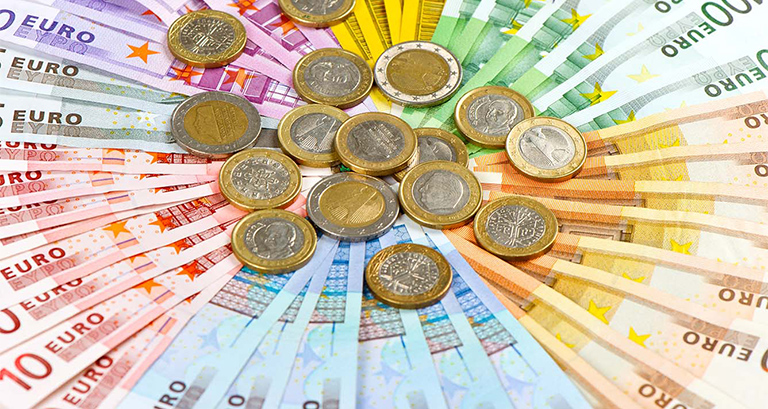Although the pure cotton-fibre paper on which euro banknotes are printed is highly resistant, normal use eventually leads to their becoming worn and soiled. Furthermore, banknotes can be damaged due to tearing, accidental exposure to moisture or fire, etc.
Although the Banco de España is in charge of maintaining banknote quality, anyone in possession of a damaged banknote may present it at a branch of the Banco de España, or at a credit institution for inspection and subsequent replacement by a new one, provided all the requirements are met.
As a general rule, it will be replaced if more than half the original surface of the banknote is presented, or if it can be proved that the missing part has been destroyed. Once inspected, notes that are stained, dirty, defaced or torn can be exchanged for new notes of equal value or credited to the current account of the financial institution indicated by the presenter.
However, this general exchange rule does not apply to certain types of damaged banknotes. You can consult some of them below and how to exchange them, if their condition or special conditions allow them to be exchanged:
When there is sufficient proof or evidence that authentic euro banknotes have been intentionally damaged, their exchange will be refused and they will be retained by the Banco de España in order to prevent them from recirculating.
Such banknotes will be exchanged when there is sufficient proof or evidence that the persons exchanging them are doing so in good faith or when they can prove that they are acting in good faith. It should be taken into account that writing, stamping or inscriptions on the banknotes are likely to be considered as deliberate damage to the banknotes that could affect their integrity, for which reason it could be determined that they are not exchangeable.
Any type of inscription, whatever its aim or purpose, constitutes an improper use of euro banknotes that does not correspond to its monetary purpose, which is the only appropriate use of legal tender banknotes.
Some banknote transportation and custody systems, such as a safe in a cash transportation vehicle or an ATM, incorporate devices loaded with security inks or adhesive substances that, if activated, make the banknotes unusable and worthless. The activation may be due to a forced access attempt (attempted theft) or to the accidental manipulation of the professionals in charge of the banknotes’ transportation and custody.
If someone gives you a banknote stained with ink or impregnated with an adhesive substance by an anti-theft device:
- Don’t accept it and ask for another one. You cannot be sure that the person offering you the banknote is the rightful owner.
- Refuse bleached or discoloured banknotes, as criminals might have tried to remove ink stains by washing them.
- Bring it to your bank or to the Banco de España, reporting how you received it.
- If the investigations reveal that the ink stains are from an anti-theft device, you may not be entitled to a reimbursement. National central banks can exchange euro banknotes stained by anti-theft devices only at the request of the original banknote owner who was the victim of the criminal activity that led to the staining of the banknotes.
- If the investigations confirm that the ink stains are not from an anti-theft device and the banknote has just been accidentally marked, you will receive a new banknote or a fund transfer into your bank account.
For more information click in the following link![]() .
.
The exchange of banknotes damaged by the activation of antitheft devices – presented by professional clients (referred to in Article 6 (1) of Regulation (EC) 1338/2001) – is subject to a fee of ten cents per banknote, if the number of banknotes exchanged is equal to or over one hundred. In this case, the amount of the fee will be the result of multiplying the unit charge by the total number of banknotes exchanged. No fee will be charged when the banknotes have been damaged as a result of actual or attempted robbery, extreme situations which shall be justified by means of a photocopy of the report filed with the police or judicial authorities.
When there is sufficient proof or evidence that the damaged euro banknotes are contaminated in such a way that they represent a risk to health or safety, the Banco de España may require the presentation of a safety and hygiene assessment issued by the competent authorities.
Although banknote production is subject to exhaustive quality controls, in the exceptional event that a banknote has a production defect, it can be exchanged upon presentation at any branch of the Banco de España or through a credit institution.

